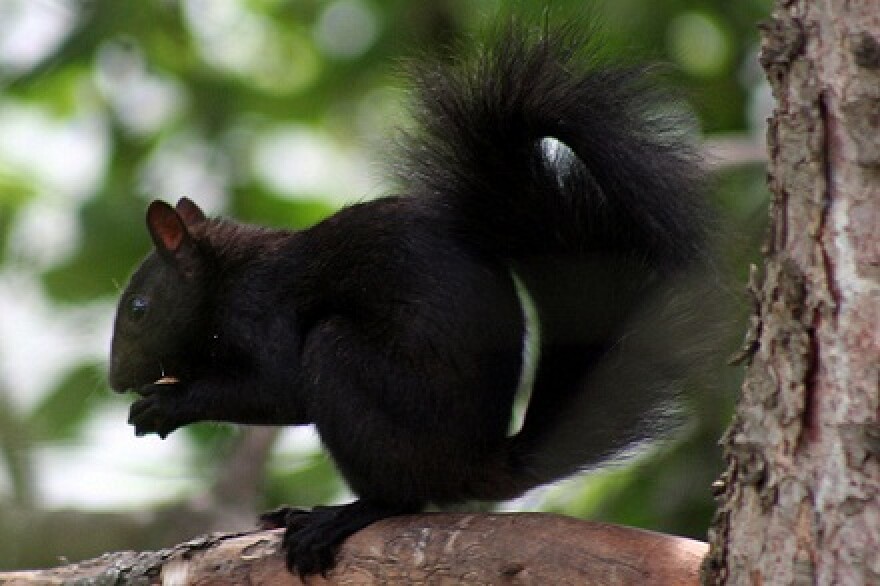In my experience, children can ask some pretty profound questions. A while back, at an undisclosed school event, a child asked me why there are so many black squirrels now. I did not have an answer ready, so like any good biologist, I gave a stock answer: black squirrels are simply a melanistic form of gray squirrels, and while nature may select against such a mutation, in residential, suburban, or rural areas (where food is abundant and natural predators are scarce) these animals are more likely to survive. It seemed like a fair answer in the absence of any other facts. However, I kept mulling that question over, because I myself have seen an increase in the number of black squirrels.
I came up with some possible explanations. Perhaps the black color allows them to more effectively absorb heat in winter improving survival in northern climates. Maybe the black coloration protects them from owl predation at night. Maybe the melanistic gene, typically recessive, had become dominant through many generations of breeding and black squirrels select for other black squirrels resulting in all black squirrel babies. All of the answers I came up with revolve around the central axis of best fitness. Adaptation is crucial for species’ survival. A classic example was a white moth that lived in Europe at the beginning of the industrial revolution. As industry progressed, the soot from factories turned the bark of trees a darker color, and only the darker phase of that particular species of moth was suited for evading detection; eventually the white color phase was eaten into extinction and the darker phase became dominant. The same would happen with our snowshoe hares, for example, if we went several years without snow cover—white hares would be caught more often than mottled or all brown animals.
I decided to see if anyone had noted, or studied, this black squirrel question. In North America, the black squirrel is generally regarded as the atypical color phase of the eastern gray squirrel, but it appears the further north you go, the more common black squirrels become. In Toronto, black squirrels vastly outnumber grays, further illustrating the effect of latitude on this color phase. Perhaps absorbing heat has something to do with their increasing numbers after all, but there is still no definitive proof.
I finally came across a study on this very question over in England. In the United States, eastern gray squirrels are native and very common, not usually the subject of study. In England, however, they are an aggressive invasive species. Introduced in 1870 as an exotic pet, they now number over two million in the UK. The black vs. gray question was a worthwhile study in a country whose native squirrel population is now estimated at only 120,000. According to DNA studies, the black coloration is a result of a mutant gene, missing a piece as it were, inherited from both parents. Researchers believe this mutation could potentially result in a squirrel that is more aggressive, or possibly a male that is more attractive to females than the more common gray fellows.
It is clear that black eastern gray squirrels are well-equipped to survive in the Northwoods. While we may not know the exact reason, I expect we will continue to see their numbers increase until their adaptive advantage is once again reduced by the environment they live in.



